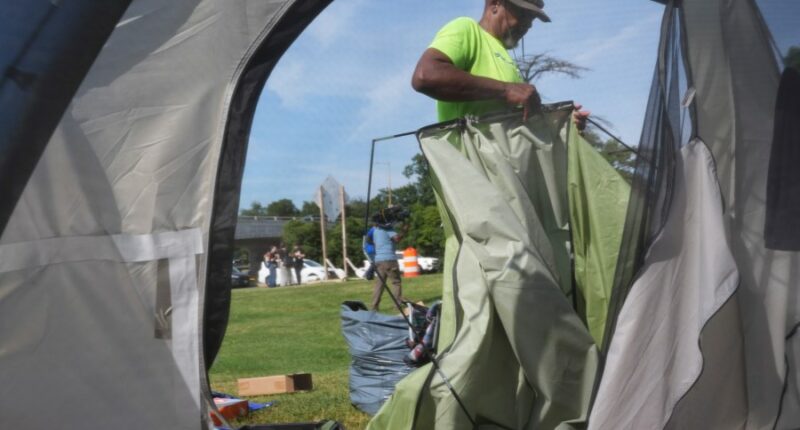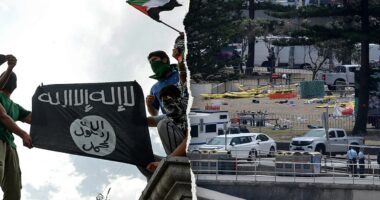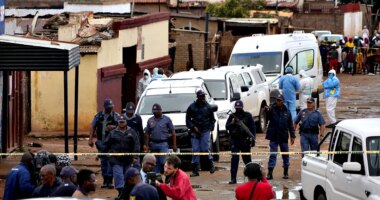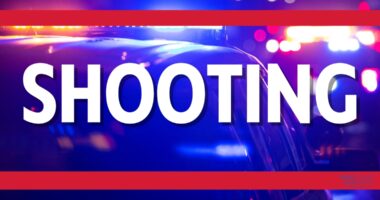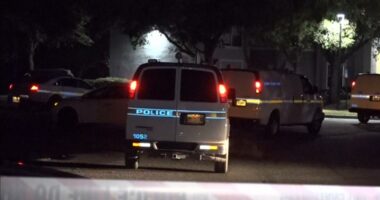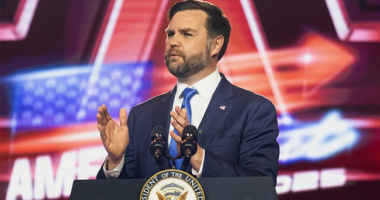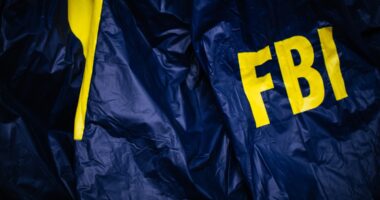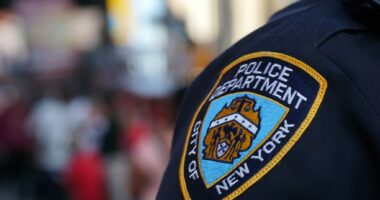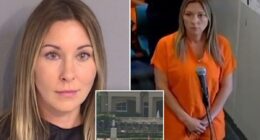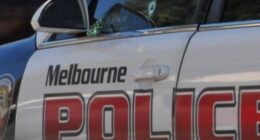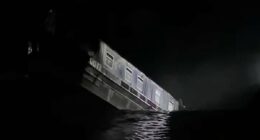Share this @internewscast.com

WASHINGTON (AP) — The police chief of D.C. has intensified collaboration between her department and federal immigration officials as President Donald Trump’s influence on law enforcement in the nation’s capital began to materialize on Thursday. National Guard troops were present at renowned sites, and Humvees stood guard at the crowded main train station.
The police chief’s directive now permits Metropolitan Police Department officers to share information with immigration agencies about individuals not in custody, such as those involved in traffic stops or at checkpoints. Additionally, MPD officers are authorized to offer “transportation for federal immigration employees and detained individuals,” as stated in the directive.
The new measures, which notably increase the cooperation between the local police and federal immigration agencies, represent a departure from the district’s traditional stance against participating in civil immigration enforcement. The measures take effect immediately.
Mayor Muriel Bowser, balancing the demands of a Republican-led White House and her primarily Democratic constituents, was out of town on Thursday for a family event at Martha’s Vineyard but was expected to return on Friday, according to her office.
Amid a city on edge due to the buildup towards federal law enforcement intervention, volunteers assisted homeless individuals in leaving their long-term camps, destinations often uncertain. Trump expressed his satisfaction with the progression of the operation, which now also connects directly with his immigration-control initiatives.
“I’ve heard that just happened, and that’s a very positive thing,” Trump remarked regarding Police Chief Pamela Smith’s directive. “If they’re doing that, it’s a great step forward.”
A boost in police activity, federal and otherwise
For an already wary Washington, Thursday marked a notable — and highly visible — uptick in presence from the previous two days. The visibility of federal forces around the city, including in many high-traffic areas, was striking to residents going about their lives. Trump has the power to take over federal law enforcement for 30 days before his actions must be reviewed by Congress, though he has said he’ll re-evaluate as that deadline approaches.
The response before Thursday had been gradual and, by all appearances, low key. But on Wednesday night, officers set up a checkpoint in one of D.C.’s popular nightlife areas, drawing protests. The White House said 45 arrests were made Wednesday night, with 29 people arrested for living in the country illegally; other arrests included for distribution or possession of drugs, carrying a concealed weapon and assaulting a federal officer.
Troops were stationed outside the Union Station transportation hub as the 800 Guard members who have been activated by Trump start in on missions that include monument security, community safety patrols and beautification efforts, the Pentagon said.
“They will remain until law and order has been restored in the District as determined by the president, standing as the gatekeepers of our great nation’s capital,” Pentagon press secretary Kingsley Wilson said. “The National Guard is uniquely qualified for this mission as a community-based force with strong local ties and disciplined training.”
Wilson said the troops won’t be armed and declined to give more details on what the safety patrols or beautification efforts would entail or how many Guard members have already been sent out on the streets.
National Guard Major Micah Maxwell said troops will assist law enforcement in a variety of roles, including traffic control posts and crowd control. The Guard members have been trained in de-escalation tactics and crowd control equipment, Maxwell said.
The White House said Thursday that Guard members aren’t making arrests but are “protecting federal assets, providing a safe environment for law enforcement officers to make arrests, and deterring violent crime with a visible law enforcement presence.”
Although the current deployment is taking place under unprecedented circumstances, National Guard troops are a semi-regular presence in D.C., typically being used during mass public events like the annual July 4 celebration. They have regularly been used in the past for crowd control in and around Metro stations.
Trump on Thursday denied that the federal law enforcement officials he sent into Washington’s streets to fight crime have been diverted from priority assignments like counterterrorism. Asked if he was concerned about that, Trump said he’s using a “very small force” of soldiers and that city police are now allowed to do their job properly amidst his security lockdown.
For homeless residents, an uncertain time is at hand
Meanwhile, about a dozen homeless residents in Washington packed up their belongings with help from volunteers from charitable groups and staffers from some city agencies. Items largely were not forcibly thrown out by law enforcement, but a garbage truck idled nearby.
Several protesters held signs close by, some critical of the Trump administration. Once the residents had left, a construction vehicle from a city agency cleared through the remains of the tents.
The departures were voluntary, but they came in response to a clear threat from the Trump administration. Advocates expect law enforcement officers to fan out across D.C. in the coming days to forcibly take down any remaining homeless encampments. In Washington Circle, which still contains a few tents, city workers put up signs announcing “general cleanup of this public space” starting at 10 a.m. Monday.
For two days, small groups of federal officers have been visible in scattered parts of the city. But more were present in high-profile locations Wednesday night, and troops were expected to start doing more missions Thursday.
Agents from Homeland Security Investigations have patrolled the popular U Street corridor, while Drug Enforcement Administration officers were seen on the National Mall, with Guard members parked nearby. DEA agents also joined MPD officers on patrol in the Navy Yard neighborhood, while FBI agents stood along the heavily trafficked Massachusetts Avenue.
___
Associated Press journalists Jacquelyn Martin, Mike Pesoli, Darlene Superville and David Klepper contributed to this report.
